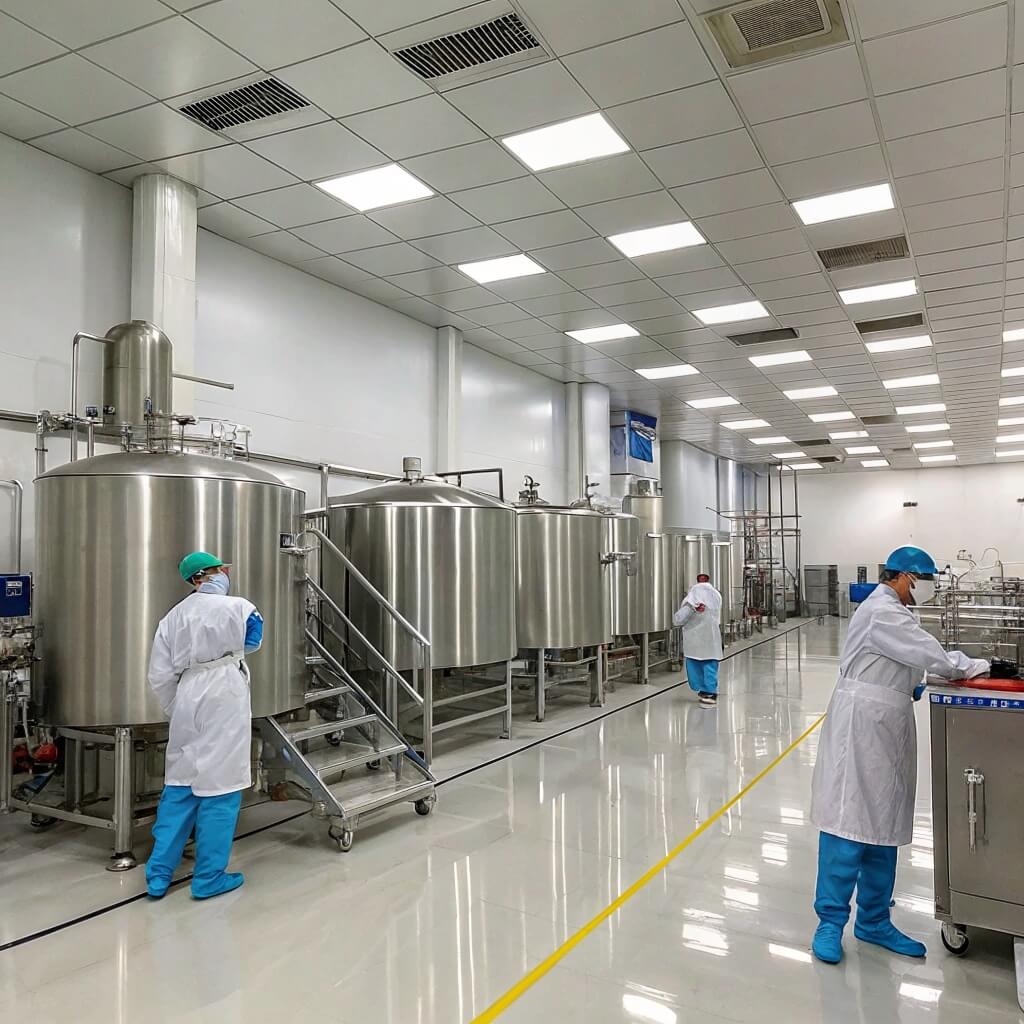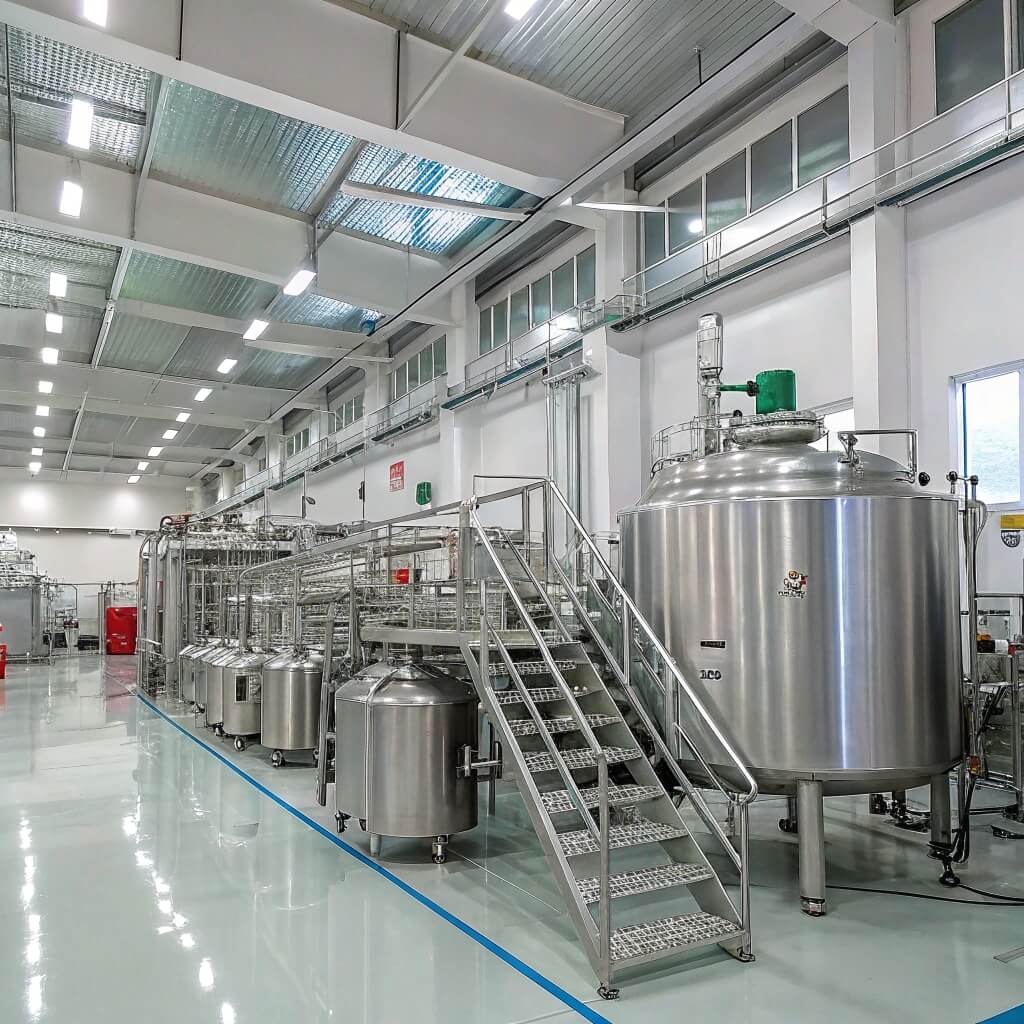Hydroxypropyl Methylcellulose, or HPMC, is a key player in pharmaceutical manufacturing and formulation. What’s the real story? This polymer is integral to multiple pharmaceutical applications, from tablet binders to film coatings, and even drug release systems. In this article, we will dive deep into the main HPMC uses in pharmaceuticals, emphasizing its technical roles and practical benefits for decision-makers in industries like pharma production and supply chain management. Whether you’re looking to optimize your product’s stability, improve manufacturing efficiency, or comply with regulatory demands, understanding how HPMC functions is invaluable. Let’s explore its chemical nature, manufacturing roles, formulation challenges, and quality considerations to equip you with actionable knowledge.

1 What is Hydroxypropyl Methylcellulose (HPMC) and why is it important in pharmaceuticals?
Hydroxypropyl Methylcellulose (HPMC) is a semi-synthetic polymer derived from cellulose, chemically modified with methyl and hydroxypropyl groups. But here’s the kicker—its non-ionic nature and water solubility make it incredibly versatile in pharmaceutical applications. It is classified as a generally recognized as safe (GRAS) excipient, which supports its widespread acceptance in drug products globally. HPMC’s ability to dissolve in cold water but form films upon drying is foundational for its roles in tablets and coatings. What’s the real story? Because HPMC is inert and non-toxic, it is suitable for oral, topical, and ophthalmic formulations. It is biocompatible and does not react negatively with active pharmaceutical ingredients (APIs), which is critical in creating stable and effective medicines.
HPMC first gained attention in the pharmaceutical field due to its flexibility as a binder and film former. Its molecular weight and degree of substitution can be tailored to suit different formulation demands, providing control over viscosity, gel formation, and film properties. This adaptability makes HPMC indispensable for a range of dosage forms.
For example, in tablet manufacture, HPMC acts as a binder improving tablet hardness and cohesion without affecting drug release adversely. In controlled release formulations, it helps regulate drug diffusion by forming a gel matrix around the API. And in coating applications, it produces smooth, uniform films that protect tablets, mask tastes, and control dissolution.
HPMC’s broad utility spans solid dose, topical, and ophthalmic sectors, reflecting its importance in pharma manufacturing.
| Aspect | Description | Pharmaceutical Role |
|---|---|---|
| Chemical Nature | Cellulose ether, methylated and hydroxypropylated | Water soluble, film-forming |
| Safety Profile | Non-toxic, GRAS-certified | Suitable for oral, topical, ophthalmic uses |
| Physical Behavior | Forms gels, films on drying | Controls drug release, coating applications |
| Customizability | Variable molecular weight and substitution | Adjusts viscosity and release profiles |
| Applications clés | Binders, coatings, controlled release | Widely used across solid and liquid forms |
2 How is HPMC used as a tablet binder and filler in pharmaceutical manufacturing?
Ready for the good part? HPMC’s role as a binder and filler is fundamental in the tablet compression process. As a binder, HPMC improves the cohesive forces between powder particles, enhancing tablet hardness and mechanical strength without compromising disintegration. For instance, widely prescribed tablets like some painkillers and supplements incorporate HPMC to ensure they remain intact throughout handling but dissolve efficiently in the gastrointestinal tract.
In addition to binding, HPMC is sometimes used as a filler to increase bulk volume, especially in low-dose formulations. This is particularly useful when active pharmaceutical ingredients (APIs) require dilution to facilitate manufacturing and accurate dosing.
A practical example can be seen in paracetamol tablets, where HPMC grades with tailored viscosity ensure tablets are robust but still disintegrate properly, striking the balance between durability and bioavailability.
Another case study involves multivitamin formulations, where HPMC’s binding properties enhance tablet shape retention during packaging and transport.
HPMC’s solubility and compatibility with other excipients enhance the uniformity of tablet blends and reduce powder segregation.
But here’s the kicker: HPMC enables process optimization too. It reduces the need for excessive compression force, which can stress manufacturing equipment and extend batch times.
Pharmaceutical companies value these characteristics because they translate into higher product quality and fewer production issues.
| Rôle | Effet du HPMC | Example Application |
|---|---|---|
| Binder | Increases tablet strength and cohesion | Paracetamol tablets |
| Filler | Adds bulk without affecting disintegration | Low-dose vitamin tablets |
| Process Optimization | Reduces compression force required | General tablet manufacturing |
| Compatibilité | Mixes well with APIs and excipients | Multivitamin tablets |
| Impact sur la libération du médicament | Maintains appropriate dissolution profile | Pain relief and supplement tablets |
3 In what ways does HPMC function as a film coating agent for tablets and capsules?
When it comes to tablet and capsule coatings, HPMC is a superstar. This is where it gets interesting—HPMC provides a clear, tasteless, and protective film that improves the product’s appearance, masks unpleasant tastes, and extends shelf life. Film coatings based on HPMC also assist in modified or sustained drug release by controlling dissolution rates.
In pharmaceutical production, the choice of coating not only affects aesthetics but directly impacts patient compliance and therapeutic efficacy. HPMC is water-soluble, allowing easy preparation of aqueous coating solutions, which are safer and more environmentally friendly than solvent-based systems.
A practical example is its use in extended-release tablets where HPMC coatings create barriers that slow tablet dissolution, delivering active ingredients over prolonged periods. For instance, certain cardiovascular drugs leverage HPMC coatings for controlled plasma levels.
Another case involves capsules where HPMC films prevent moisture ingress, protecting hygroscopic ingredients while maintaining capsule integrity.
HPMC coatings have also shown effectiveness in taste masking, especially for bitter or unpleasant APIs, improving patient acceptance without adding artificial flavors.
The application methods vary from spray coating in pan coaters to fluidized bed systems, with carefully controlled parameters such as temperature and solvent evaporation ensuring film uniformity.
Ready for the good part? HPMC coatings are also highly flexible, adapting to different formulation requirements, such as immediate or delayed release profiles.
| Fonctionnalité | HPMC Contribution | Pharmaceutical Benefit |
|---|---|---|
| Formation cinématographique | Produces smooth, uniform films | Enhances aesthetic appeal and taste masking |
| libération contrôlée | Slows dissolution via film barrier | Enables extended-release formulations |
| Moisture Protection | Acts as a moisture barrier | Protects sensitive APIs and excipients |
| Application Methods | Compatible with aqueous coating systems | Safer and more eco-friendly processes |
| Conformité des patients | Masking unpleasant tastes | Improves acceptability and adherence |
4 How does HPMC contribute to sustained and controlled drug release systems?
Controlling drug release is critical in modern pharmaceutics, and HPMC’s role here is indispensable. Its ability to form gel matrices in aqueous environments enables sustained or controlled drug release by regulating diffusion and erosion mechanisms.
What’s the real story? Upon contact with gastrointestinal fluids, HPMC hydrates and swells to form a viscous gel layer around the tablet or capsule. This gel controls the rate at which the drug is released, smoothing out peaks in drug concentration and prolonging therapeutic effects.
One study on anti-hypertensive tablets demonstrated that increasing HPMC concentration led to slower drug release, allowing once-daily dosing instead of multiple doses.
Another example is the formulation of anti-diabetic drugs that benefit from HPMC-based coatings, which maintain stable plasma drug concentrations by modulating release kinetics.
Additionally, HPMC’s molecular weight and grade directly influence the thickness and viscosity of the gel layer, providing formulation scientists with precise control. Low molecular weight grades favor faster release, while high molecular weight counterparts enable longer durations.
This technology reduces side effects linked to peak drug levels and enhances patient compliance by simplifying dosing schedules.
But here’s the kicker: HPMC also protects sensitive API molecules from premature degradation by limiting exposure to gastric acids.
| Paramètre | Effect on Release | Example Use Case |
|---|---|---|
| Concentration HPMC | Higher concentration slows release | Anti-hypertensive tablets |
| Poids moléculaire | High weight extends duration | Anti-diabetic medications |
| Gel Layer Formation | Controls diffusion and swelling | All sustained-release formulations |
| Protective Barrier | Shields vulnerable APIs | Médicaments sensibles à l'acide |
| Release Mode | Diffusion and erosion controlled | Extended and sustained release tablets |
5 What role does HPMC play in ophthalmic and topical pharmaceutical formulations?
HPMC isn’t limited to oral drugs; here’s where it gets interesting—it is also widely used in ophthalmic and topical formulations due to its lubricating and viscosity-enhancing properties.
In eye drops, HPMC functions as a lubricant to relieve dry or irritated eyes while maintaining drug suspension stability. Several well-known artificial tear products use HPMC as a primary ingredient to improve patient comfort.
In topical gels and creams, HPMC serves as a thickening agent, stabilizing formulations and enhancing the spreadability of active ingredients. For example, hydrogels containing anti-inflammatory drugs often include HPMC to provide the right viscosity and maintain hydration of the skin.
HPMC also facilitates controlled release in topical products by modulating drug diffusion through the gel matrix. This improves therapeutic outcomes while reducing systemic absorption.
A major advantage is that HPMC is non-irritating and hypoallergenic, vital traits for sensitive tissues like the eyes and skin.
Case studies demonstrate that formulations with HPMC improve patient adherence due to better comfort and application characteristics. Its compatibility with a wide range of active ingredients and excipients adds to its versatility in these routes.
Ready for the good part? The polymer also stabilizes suspensions by preventing particle sedimentation, crucial in ophthalmic products where uniform dosing is critical.
| Type de formulation | Fonction HPMC | Avantage |
|---|---|---|
| Eye Drops | Lubricant and viscosity enhancer | Provides relief in dry eye conditions |
| Topical Gels/Creams | Thickener and stabilizer | Enhances spreadability and hydration |
| libération contrôlée | Modulates drug diffusion | Prolonged therapeutic effects |
| Stabilité de la suspension | Empêche la sédimentation | Ensures uniform dose delivery |
| Biocompatibilité | Non-irritating and safe | Suitable for sensitive skin and eyes |
6 How does HPMC improve the solubility and bioavailability of poorly soluble drugs?
Poor water solubility is a common problem limiting many drugs’ therapeutic efficacy. But here’s the kicker: HPMC offers practical solutions to improve solubility and bioavailability through formulation techniques like solid dispersions and hydrophilic matrix systems.
In solid dispersions, poorly soluble APIs are dispersed in an HPMC matrix that enhances wetting and prevents crystallization, increasing dissolution rates. For example, antifungal drugs with low solubility have shown significantly improved bioavailability when formulated as HPMC-based solid dispersions.
Hydrophilic matrices using HPMC swell upon hydration, increasing the surface area exposed to fluid and facilitating drug release.
One case study involved an anti-cancer drug where an HPMC solid dispersion formulation improved oral absorption threefold compared to the pure API.
Moreover, HPMC’s film-forming ability prevents drug aggregation and recrystallization during storage, maintaining enhanced solubility over time.
Data from several pharmaceutical studies confirm that incorporating HPMC into formulations can increase drug plasma levels and reduce variability among patients.
This is where it gets interesting: these advantages translate directly into more effective therapies, reduced dosing frequency, and better patient outcomes.
| Application Technique | Mécanisme | Example Benefit |
|---|---|---|
| Solid Dispersions | Improves wetting and dispersion | Increased dissolution rate |
| Hydrophilic Matrices | Swells to increase surface area | Enhanced drug release |
| Formation cinématographique | Prevents drug crystallization | Maintains stability over time |
| Bioavailability Impact | Increases plasma drug levels | More effective therapeutic action |
| Patient Benefits | Reduces dose variability | Improves adherence and outcomes |
7 What are the technical challenges and considerations when working with HPMC in pharmaceuticals?
While HPMC offers numerous advantages, using it effectively requires navigating certain technical challenges. What’s the real story? These issues mainly relate to processing, formulation compatibility, and stability.
One challenge involves optimizing viscosity. Different HPMC grades span a wide viscosity range and selecting the right grade impacts mixing, coating, and drug release. Using too viscous a grade can cause processing difficulties such as poor flow or uneven coatings, while too low viscosity can compromise film integrity.
Compatibility with other excipients is another consideration. HPMC may interact physically or chemically with certain APIs or additives, necessitating thorough pre-formulation testing. For example, incompatibilities can affect drug release or stability.
Processing parameters like temperature and drying conditions must be optimized to prevent degradation or cracking of HPMC films. Moisture sensitivity during storage is also a concern, as humidity can alter HPMC properties if not properly controlled.
A detailed example involves tablet coating where improper drying led to blistering and peeling, requiring adjustments in process control.
Storage conditions for HPMC powders require protection from moisture and contamination to maintain quality.
But here’s the kicker: companies that proactively address these challenges through design of experiments (DoE) and robust quality systems improve product consistency and reduce costs.
| Défi | Impact | Mitigation Strategy |
|---|---|---|
| Viscosity Optimization | Processing and film quality issues | Select appropriate grade, pilot testing |
| Excipients Compatibility | Drug release and stability problems | Conduct compatibility studies |
| Drying and Processing | Coating defects or degradation | Control drying parameters precisely |
| Sensibilité à l'humidité | Altered raw material properties | Store under controlled humidity |
| Storage Practices | Quality loss over time | Use sealed containers, monitor |
8 How do pharmaceutical companies ensure quality and compliance when using HPMC?
Ensuring consistent quality and regulatory compliance is non-negotiable in pharmaceutical manufacturing. Ready for the good part? Adherence to strict quality control (QC) and quality assurance (QA) frameworks is essential.
Raw materials like HPMC powders undergo rigorous testing for viscosity, particle size, substitution pattern, and microbial limits before acceptance. Certificates of analysis (CoA) and audits ensure supplier reliability.
During processing, in-process control (IPC) measures monitor solution viscosity, coating weight, drying parameters, and final film characteristics to prevent deviations.
Finished product testing includes mechanical strength, dissolution profile, and visual inspections to ensure performance.
Pharmaceutical regulations require documentation of all batch records and traceability for raw materials.
Trend analysis and stability studies ensure that formulations using HPMC maintain their properties over shelf life.
One major pharmaceutical company reported reducing product recalls by 30% after strengthening HPMC supplier qualification and QC procedures.
This is where it gets interesting: companies leverage advanced analytics and process analytical technology (PAT) to detect early variations and maintain continuous improvement.
| Aspect qualité | Control Measures | Industry Benefit |
|---|---|---|
| Test des matières premières | Viscosity, purity, microbiology | Assures input consistency |
| Qualification des fournisseurs | Audits and CoA verification | Reduces supply chain risks |
| Process Monitoring | Real-time viscosity and coating checks | Maintains product uniformity |
| Finished Product Testing | Mechanical and dissolution tests | Confirms therapeutic efficacy |
| Documentation and Traceability | Comprehensive batch records | Assure la conformité réglementaire |
Conclusion
This article has explored the main HPMC uses in pharmaceuticals by examining its crucial roles as a binder, filler, coating agent, and release modifier. We discussed its application in ophthalmic and topical formulations as well as its ability to enhance solubility and bioavailability. Challenges and quality control considerations were also analyzed to provide a thorough understanding for B2B decision-makers. In summary, Hydroxypropyl Methylcellulose remains one of the most versatile and reliable excipients in pharma, offering tangible benefits that support product performance, patient compliance, and regulatory adherence. Companies leveraging its unique properties effectively can optimize manufacturing processes and innovate drug delivery systems with confidence.
Q1: What is Hydroxypropyl Methylcellulose (HPMC)?
Hydroxypropyl Methylcellulose is a cellulose-derived polymer widely used in pharmaceuticals as a binder, coating agent, and controlled release excipient due to its safety and functional versatility.
Q2: How does HPMC work in drug release systems?
HPMC forms a gel matrix that controls the release rate of drugs, enabling sustained or modified delivery profiles depending on its concentration and molecular weight.
Q3: Can HPMC be used in topical and ophthalmic formulations?
Yes, HPMC acts as a lubricant and viscosity enhancer in eye drops and topical products, improving comfort and drug absorption.
Q4: What challenges might arise when formulating with HPMC?
Formulators may face issues like controlling viscosity, ensuring compatibility with other ingredients, and maintaining stability during storage.
Q5: How do manufacturers ensure the quality of HPMC used in pharmaceuticals?
Through rigorous raw material testing, adherence to pharmacopeial standards, and supplier qualification to maintain consistency and compliance.




